The Greenwells Glory tied as a spider, wet, and dry fly have graced my fly box for over 40 years because their ability to fool trout and grayling has not diminished.
Therefore, when asked to recommend a fly to imitate a hatch olives my answer is…
“Tie On A Greenwells Glory”.
Because it’s stood the test of time as a fantastic imitation of olives found on rivers and stillwaters.
It was originally tied as a wet fly in the middle of the nineteenth century and has become one of the most well-known trout flies in the UK.
So, let’s look at the patterns I tie…
How to tie the Greenwells Glory Spider.
First up is a spider pattern because it’s simple for fly-tying beginners to tie and the materials needed are cheap and easily obtained.
Material list:
- Hook: #12 to #16 HENDS BL354
- Thread: 8/0 Waxed Olive Uni-Thread
- Body: 8/0 Waxed Olive Uni-Thread
- Rib: Fine Gold Wire
- Hackle: Greenwell Hen feather
Step-by-step tying instructions:
This version of the fly is tied using a HENDS BL354 hook but I also like to use a bronze Kamasan B170 and B175 hooks.

Step 1. Wax the thread. Catch in the fine gold wire then wind the thread down the hook shank and stop where the barb would be.
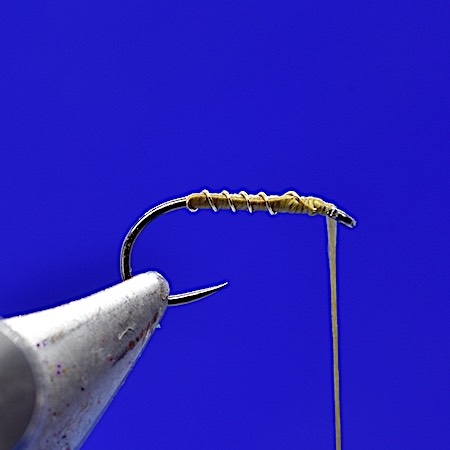
Step 2. Wind the tread towards the eye, and wind the gold wire in even turns to form the ribbed body. Secure wire about 3 mm from the eye with the thread.
Now, select a Greenwell hen hackle and remove the fluff and long fibres from the butt end of the feather.
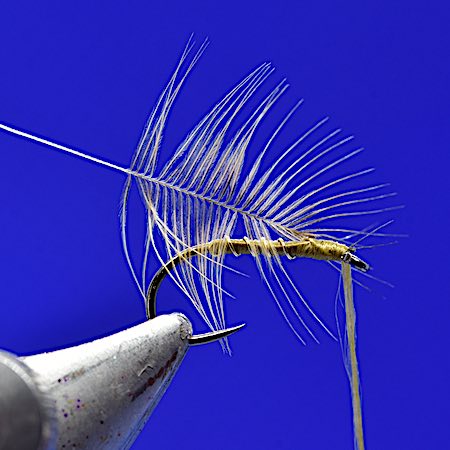
Step 3. Stroke the hackle fibres back and tie the feather in by its tip 3mm from the eye with the waxed olive thread.

Step 4. Form the hackle by winding the feather around the hook shank (2 or 3 times is sufficient). Tie off the hackle and form a neat head with the thread. Whip finish and varnish the head.
How to tie the Greenwells Glory Wet fly.
Material list:
- Hook: #12 to #16 HENDS BL354
- Thread: 8/0 Waxed Olive Uni-Thread
- Body: 8/0 Waxed Olive Uni-Thread
- Rib: Fine Gold Wire
- Wing: Rolled starling wing feather
- Hackle: Greenwell Hen feather
Step-by-step tying instructions:
Steps 1 and 2 for the wet fly are the same as those used to tie the spider pattern.
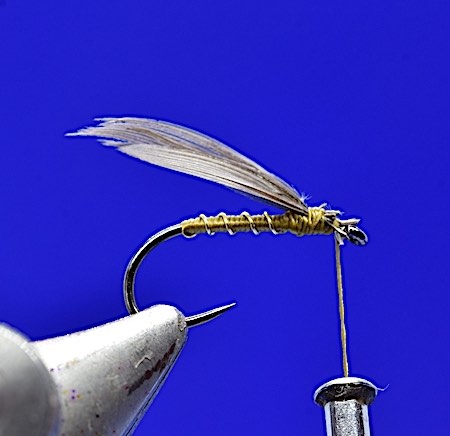
Step 3. Cut a section of a starling wing feather (ca 8 mm wide) and fold. Align the folded wind so the tip just extends past the bend and secure the other end with a few turns of waxed tying thread.
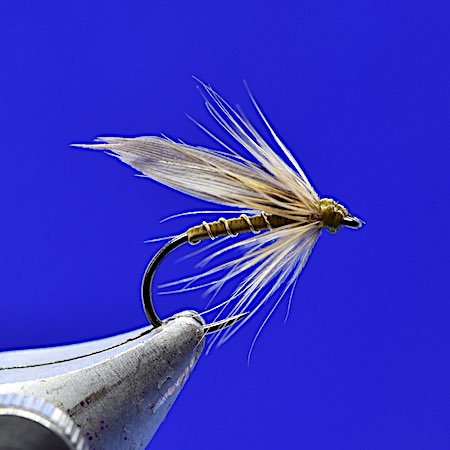
Step 4. Tie in a prepared Greenwell hen hackle by its tip. Form the hackle by winding the feather around the hook shank (two turns). Tie off the hackle and form a neat head with the thread. Whip finish and varnish the head.
How to tie the Greenwells Glory Parachute Dry Fly.
I prefer to fish parachute-style dry flies on the freestone rivers I usually fish (Welsh Dee, Eamont, Ribble, Eden). Mainly because I think it better reflects a fly attempting to escape the water’s surface, with its body just beneath the surface layer and the buoyant wing keeping it afloat in streamy water.
Material list:
- Hook: #12 to #16 HENDS BL354
- Thread: 8/0 Waxed Olive Uni-Thread
- Body: 8/0 Waxed Olive Uni-Thread
- Rib: Fine Gold Wire
- Wing Post: White Veniard Polypropylene Floating Yarn
- Hackle: Medium Dun Genetic cock feather
Step-by-step tying instructions:
Steps 1 and 2 for the dry fly are the same as those used to tie the spider pattern.
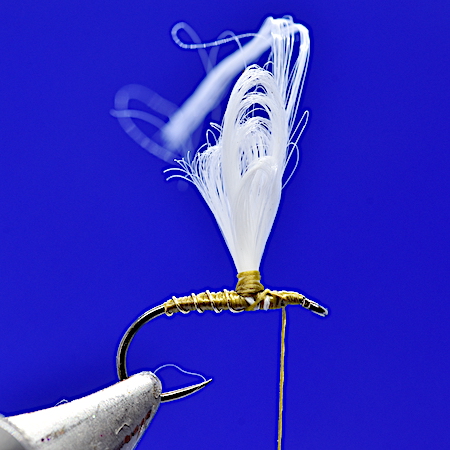
Step 3. Take a folded piece of polyethylene yarn and tie it onto the body a 3 mm for the hook eye.
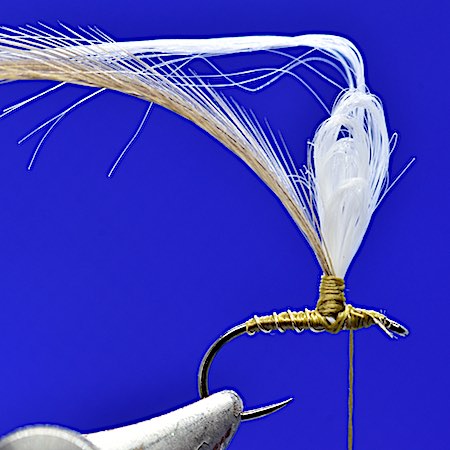
Step 4. Tie in a medium dun genetic cock hackle at the base of the post and secure up the post with the olive thread

Step 5. Form the hackle by winding the feather down the wing post and securing it at the base of the post with the waxed thread. Form a neat head with the thread. Whip finish, varnish the head and cut the post to length.
My Favourite Greenwells Glory Dry Fly Variations
To match different types of Olives, the fly can be customized by varying the shade of olive thread from yellow to brown shade olive.
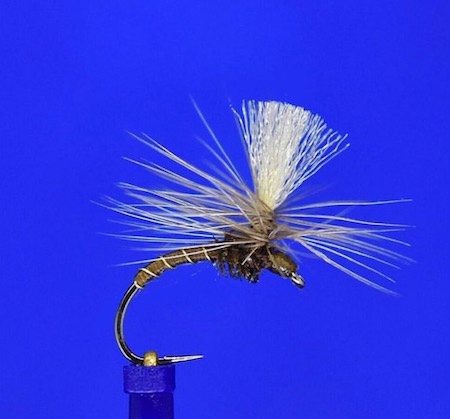
- Hook: #16 Kamasan B100
- Thread: 8/0 waxed olive
- Rib: fine copper wire
- Wing Post: Cream Antron Yarn
- Thorax: Peacock Herl
- Hackle: Medium dun genetic cock
For difficult light, it’s worth having a few tied with a fluorescent orange post to help keep track of the fly drifting down the river.
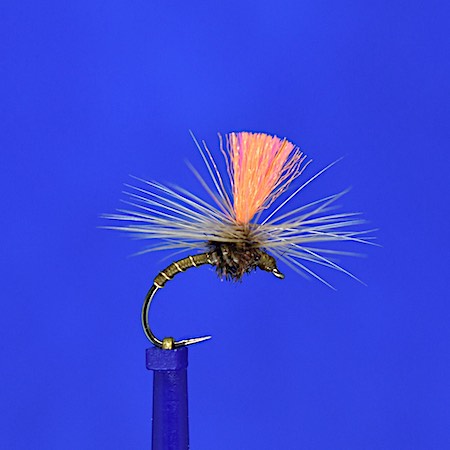
- Hook: #16 Kamasan B100
- Thread: 8/0 waxed olive
- Rib: fine copper wire
- Wing Post: Fluorescent Orange Antron Yarn
- Thorax: Peacock Herl
- Hackle: Medium dun genetic cock
Fishing Greenwells Glory Flies
Most UK rivers have a hatch of one of the various Olive species that a Greenwells Glory can imitate. For example,
- Large Dark Olive,
- Olive Upright,
- Medium Olives,
- Blue-Winged Olives,
- Spurwings,
- Pale Water Dun etc.
For me, Greenwells Glory is more than simply an early-season fly because it catches trout all season and grayling to the end of November.
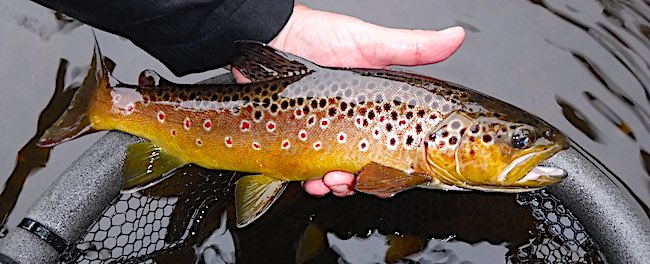
Fly fishing tips for Greenwells Glory spider and wet fly
I find that the spider and wet fly versions work best when trout and grayling are feeding on ascending nymphs at the start of an olive mayfly hatch. Furthermore, the wet fly excels on cold days when Large Dark Olives struggle to dry their wings and leave the water’s surface.
So how do I fish spiders and wet flies…
Equipment-wise I use a 9ft 5# rod, a floating line, and a 9ft 5X copolymer leader, which has been cut back to 7ft from the butt end. At the end of the leader, I tie on two 3ft lengths of 3lb copolymer to form 2 droppers.
Normally, I tie the Greenwells Glory wet fly on the top dropper of a 3-fly cast with the spider on the middle dropper and a pheasant tail nymph on the point.
It is important to degrease the leader with Fuller’s mud to ensure it sinks a little.
Fly fishing tips for Greenwells Glory Dry fly
The dry is my preferred choice once trout and grayling are confidently rising and taking Olives on the surface.
Equipment-wise, I use a 9ft 5# rod for dry fly fishing. Attached to the floating line is a 9ft 5X copolymer leader tipped with a 3 to 4 ft length of 3lb fluorocarbon. Fuller’s mud is applied to the fluorocarbon tippet to remove its shine and make it sink. Whereas, Mucilin grease is applied to the remainder of the leader.
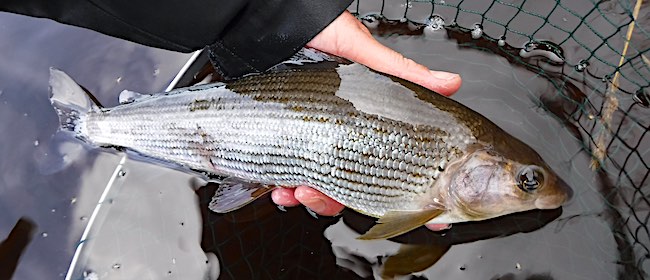
Summary
Overall the Greenwells Glory is a timeless fly pattern with a storied history and a proven track record of success at catching trout and grayling. By mastering the art of tying this classic fly and employing the right fishing techniques, I’m sure it will help you catch some lovely trout or grayling on your favourite river.

Thanks Andrew, as always a helpful and relevant post. I look forward to the next one
Hi Steve,
Great to hear it was helpful and thanks for the feedback.
Tight Lines, Andrew
As always a very well described tying for these flies which I also find very good. Thanks Andrew.
Hi Iain,
Great to hear you enjoyed it.
Tight lines, Andrew